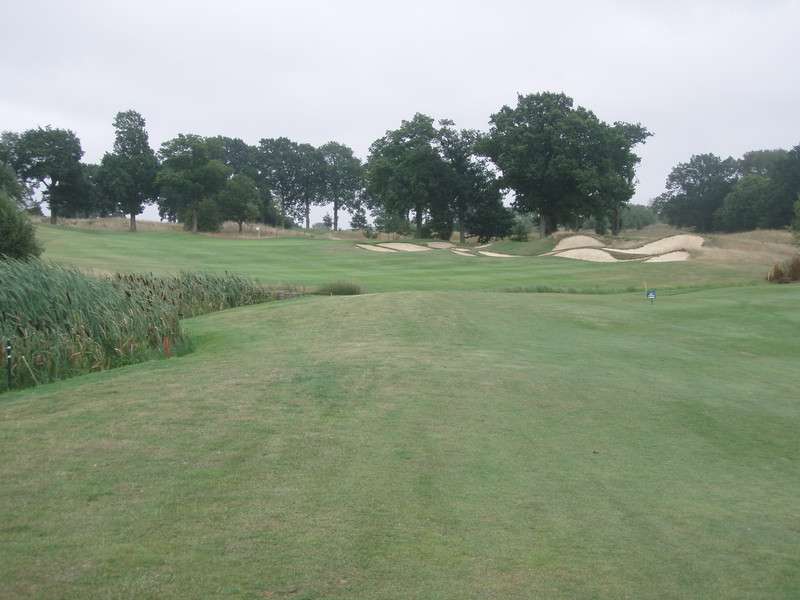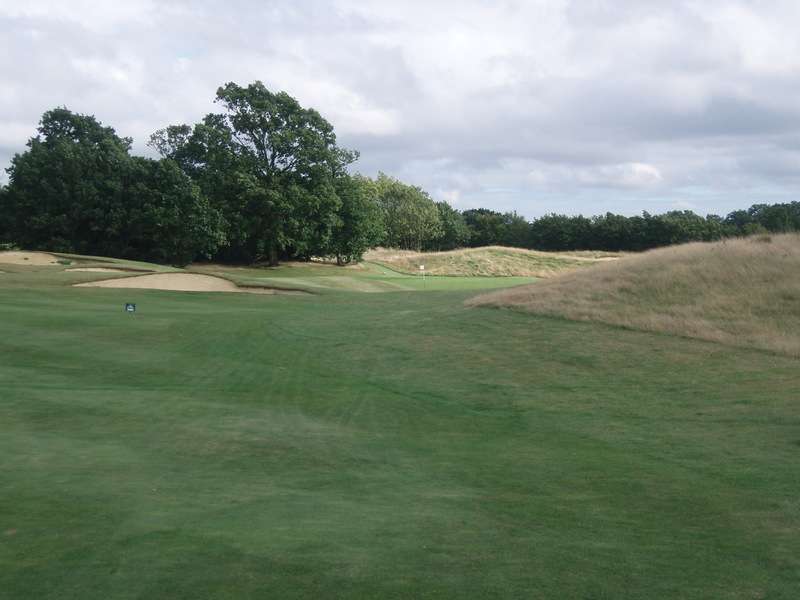 The bunker overkill can first be seen on the 2nd, that sea of sand only really likely to catch a shank
The bunker overkill can first be seen on the 2nd, that sea of sand only really likely to catch a shankThe driveable 6th combines plenty of short grass with rolling land, sand and water to create a 290-yard puzzle that can be solved many different ways
The 8th is the only bunkerless hole on the course, with a false front striking fear into you on the approach
The land movement and a well-placed fronting bunker set up a Redan-inspired approach to the 10th
The 15th green sits semi-blind over the crest of a hill
Course name: Chart Hills
Location: Biddenden, Kent, England
Four Word Course Review: More sand than Baywatch
Florida comes to the Home Counties. This is about as un-English as you're going to get, but it's fun, there are options aplenty and ample variety.
It has somewhere in the region of 130 bunkers (the largest of which is nicknamed The Anaconda - it snakes more than 260 yards up the right of the 5th fairway, before crossing over). But for the most part they are the skeleton of some great strategy.
The sand is overpowering on a few holes - the short par four 9th and par five 16th particularly, where you can hardly see a spare square inch to hit your ball that isn't a bunker. In both instances there is enough room out there, but the landing areas are hidden from view.
The par fives particularly were a case of having to plan every shot as you plotted your route to the green.
Despite the extensive use of sand, the movement of the land is a real feature of a number of holes, creating dead ground at the 1st that foreshortens the second shot in your eye and makes it seem reachable in two, or at the driveable 6th, where the fairway bunker creates a horizon behind which the green is hidden.
Elsewhere, left of the 1st green, short of the 8th green, behind the 10th green, short and left of the 12th green are great closely mown runoffs that provide a great alternative to sand as punishment for a poorly planned or executed shot.
But there were touches of "English golf", without question.The greens are generally quite sedate and slope naturally with the surrounding land. I think that helped greatly to feel that the holes were by-and-large draped over the land - though I am sure ample earthmoving was done, it seems to have been done smartly, with long landforms that run across several holes rather than short, choppy mounds that are obviously fake. As well as that, there were very few long green to tee walks, allowing the course to flow well around the property.
Fair play to the foreign visitors who come all this way to play heathland and links golf - I can appreciate why so few schedule a game at Chart Hills. But it is a very, very good course in its own right.
Last time around Golf World had it around #80 in GB&I (down from mid-70s the time before). That seems about right to me.




No comments:
Post a Comment